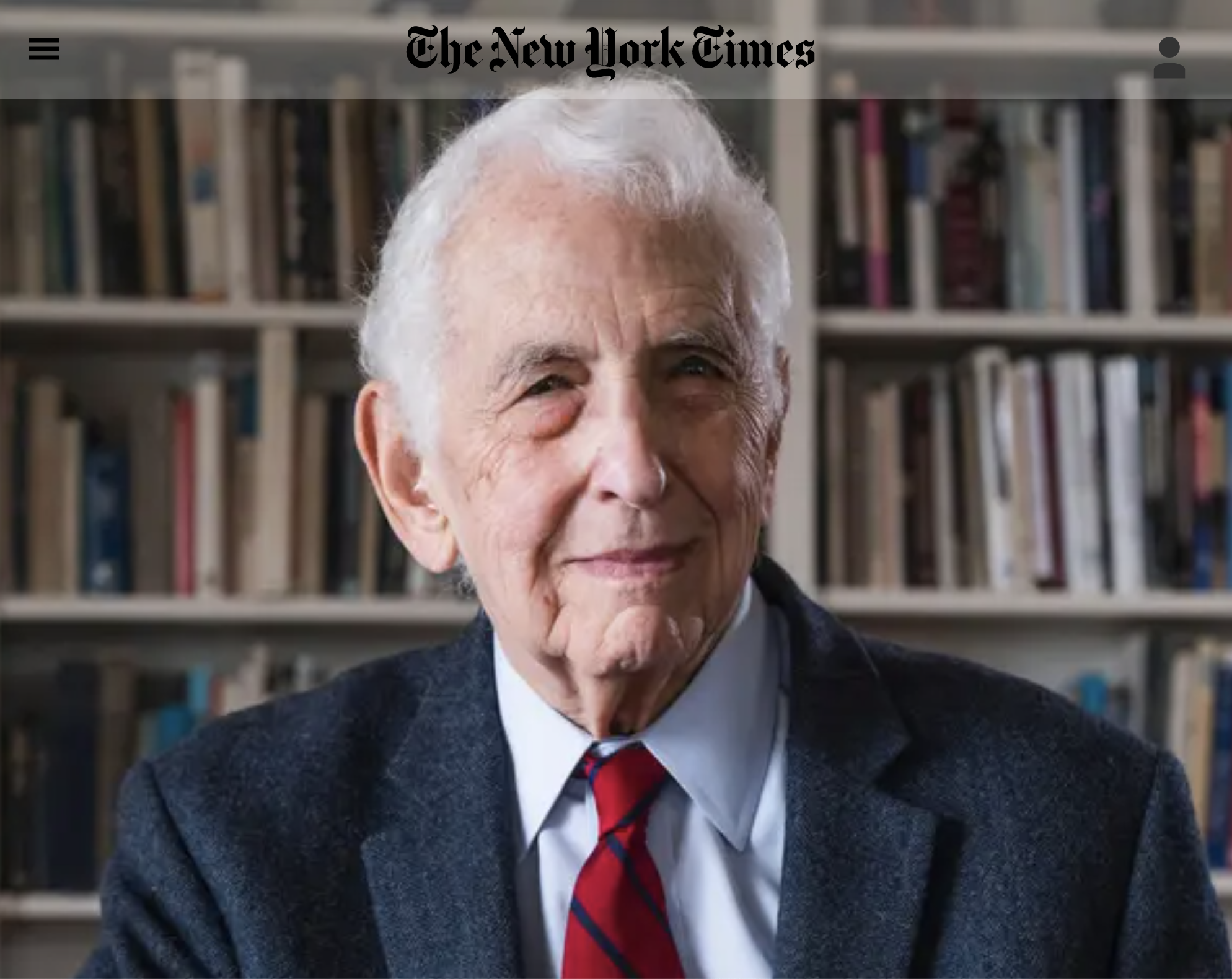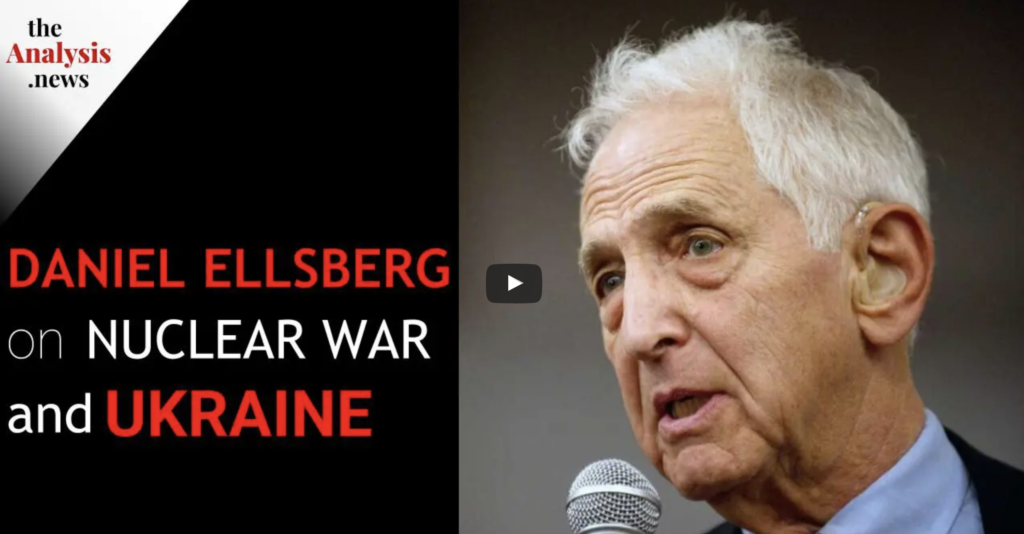On 4/22/22, Daniel Ellsberg joined host Robert Scheer on “Scheer Intelligence” to discuss how close the world is coming to annihilation in the context of the Ukraine conflict. Ellsberg took part in planning a U.S. response to a nuclear attack during the Cold War, an experience that provides him with a unique perspective on this dangerous moment in history.
Listen to the conversation / read the full transcript >>
Excerpted from the transcript:
Ellsberg: We are approaching an armed conflict between the U.S. and Russia for the first time ever since we put troops in Russia to put down the Bolsheviks in 1918. In all that time, both sides have avoided actually shooting at each other—and for a good reason, which applies right now. We have what we didn’t have 50 years ago: two doomsday machines, as I call them—that is, systems that are designed and readied and rehearsed to destroy most life on Earth.
My colleague Herman Kahn, who invented the term “doomsday machine” as a conceptual idea, was the model for Dr. Strangelove in Stanley Kubrick’s film. Kahn felt that the nuclear threat was necessary, and that to make it credible, you had to prepare to survive it by civil defense, antiballistic missiles and so forth—and you had to be prepared to carry the threat out if necessary.
That was his delusion. It has never been possible to be able to survive as a society, even as a population, from nuclear war. Yet neither side has ever rejected the idea that nuclear war can be prepared for and rehearsed and threatened and risked.
Continue Reading



